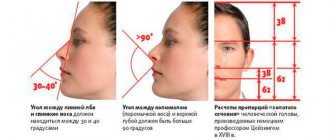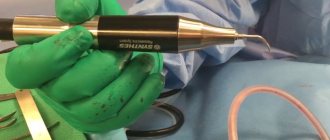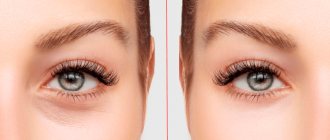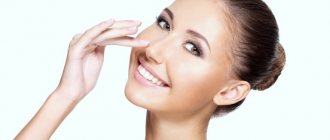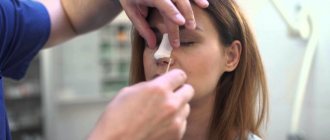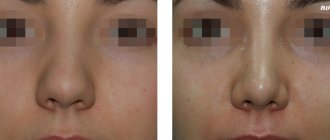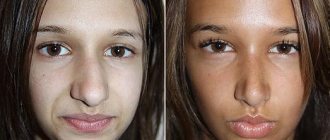Rhinoplasty of the nose
Rhinoplasty of the nose is one of the most popular types of surgical intervention in the field of facial surgery, which is performed with general and local anesthesia. It allows you to literally find a new face in 3-4 weeks.
rhinoplasty of the nose
Usually, at the first meeting, people, looking at the appearance of their counterparts, highlight some features and the most noticeable elements of the face. The peculiarities of human psychology are that the most prominent points on the face are the eyes and nose. What to do if the nose, the most significant part of the face, does not satisfy with its shape. Seek help from specialists in the field of cosmetic surgery, who, using rhinoplasty, will give you perfect proportions and contours of the nose.
Possible complications after surgery
After rhinoplasty or during the procedure itself, a person may experience the following complications:
- Allergy to anesthesia.
- Profuse nosebleeds.
- Swelling of the nasal area (in the first weeks after the procedure), which can interfere with normal nasal breathing.
- Swelling on the face (in the eyes, cheeks and other parts of the face).
- The appearance of hematomas on the face.
- Decreased sensitivity of the skin of the nose or its absolute loss for some time.
- Risk of infection.
- Large scars may form that will require another operation to remove.
- Difficulty breathing after surgery (depending on the type of surgery and procedures). Which will be carried out with nasal cartilage.
- Absence of smell or partial loss of smell.
- Stretching of the skin or loss of its flexibility (occurs when excessive cutting of cartilage in the nose).
- Death of nasal tissue.
- The formation of age spots or the appearance of blood vessels on the skin of the face.
- Fatal outcome due to anaphylactic shock.
- Patient dissatisfaction with the final result of the procedure.
- Unsuccessful procedure due to the fault of the surgeon.
The nose and its unpleasant features
Most often, the nose creates problems for its owner, because due to congenital characteristics or after injury, it can significantly spoil the appearance. This especially spoils the lives of young women and girls - either an irregular nose, or prominent plump cheeks, or the shape of the lips does not at all fit the generally accepted standards of beauty for a certain period of time. Today, plastic surgery will help to radically change the nose, making it the way the owner wants to see it or the doctor recommends. Rhinoplasty of the nose is a very popular procedure nowadays; its features are described below.
Recommendations during the recovery period
In order to protect yourself as much as possible from the complications described above, you need to follow your doctor’s recommendations. Here are the main ones:
- You should stop wearing glasses for the rehabilitation period, and if there is an urgent need, replace them with contact lenses;
- Stop smoking before and after rhinoplasty;
- It is necessary to sleep only on your back with the head of the bed raised;
- Do not eat too hot or cold food;
- Reduce the level of physical activity as much as possible;
- Do not take medications that negatively affect blood clotting;
- Refuse to visit the bathhouse and sauna, do not take a bath that is too hot;
- Try not to blow your nose for 2 months after rhinoplasty;
The essence of the operation is rhinoplasty of the nose
By rhinoplasty of the nose, surgeons mean an aesthetic surgical intervention performed to change the shape or size, contours of the outer surface of the nose.
Rhinoplasty is performed to solve two problems:
• Elimination of congenital disorders and anatomical defects;
• Elimination of the consequences of injuries in the form of deformations and disturbances in the contour of the most prominent part of the face.
The main goal of rhinoplasty is to harmonize the face by changing the shape of the nose without disturbing individual facial features. The essence of the operation is that the osteochondral nasal frame is surgically corrected. The method was first used relatively recently - a little more than half a century ago, after the end of the war. Having demonstrated the high effectiveness of the technique, doctors have made a significant breakthrough in facial surgery. Thanks to a fairly simple intervention, direct treatment problems were solved and the patient’s psycho-emotional background was improved due to the harmony and aesthetics of the face.
The main feature of the operation is the age limit of the patients. Surgeons and cosmetologists do not recommend performing the procedure before the age of 18-20, since with early rhinoplasty, further age-related changes can lead to disruption of the structure of the facial skull and the result of the operation will be impaired.
What is computer modeling?
Use of 3D technologies in medicine
has now become a fairly popular procedure and has the following advantages:
- Allows you to see the result of rhinoplasty and, if necessary, correct some areas of the nose.
- The program allows you to show and explain to the doctor in more detail what the patient wants.
- Simulation helps to mentally tune in to the operation and the future result.
Features of nose rhinoplasty
When a doctor recommends rhinoplasty to a patient who has physiological or aesthetic problems with the structure of the nose, it causes some confusion. Usually, instrumental surgical intervention, and even on the face, does not cause much enthusiasm, since it is still an operation (rhinoplasty of the nose). But this surgical intervention is based on making a minor incision in the skin and subcutaneous fat, and the nasal septum itself is also subject to resection. This gentle approach allows us to eliminate defects of fairly high complexity. The use of an open technique for nose correction is aimed at moving cartilage tissue or removing it if necessary.
The technique involves open, closed, revision rhinoplasty of the nose, septoplasty, rhinoplasty with the use of fillers. With the most loyal method of rhinoplasty, the entire volume of manipulation is carried out only through nostril incisions. But such interference is not always permissible due to certain circumstances.
Rhinoplasty of the nose, before and after surgery
Cost of the operation
The price of rhinoplasty depends on the type of intervention and the level of complexity of the operation. Today there are the following prices that apply in most clinics:
- rhinoplasty of the wings of the nose – from 45,000 rubles;
- secondary rhinoplasty – from 240,000 rubles;
- secondary rhinoplasty of the tip of the nose – from 160,000 rubles;
- primary rhinoplasty of the nose – from 120,000 rubles;
- septoplasty of the nose – from 180,000 rubles;
- classic rhinoplasty for nose reduction – from 160,000 rubles.
As a rule, the cost of rhinoplasty surgery includes anesthesia, hospital stay, the operation itself and post-operative consultations.
Changing the tip of the nose
rhinoplasty of the tip of the nose
If it is necessary to change the shape of the tip of the nose, surgical intervention is used. Rhinoplasty for the tip of the nose is a popular procedure in this field of medicine.
There are some common factors that cause the formation of a rounded nose tip (potato nose):
- Patients with thickened skin in the nasal area often have to face this problem. In such a situation, removing excess tissue will help.
- The problem may also lie in the cartilage itself. The lower and lateral cartilaginous tissue can be excessively wide or convex.
Rhinoplasty contributes to the following changes in the tip of the nose:
- reduction of a rounded nose;
- slight lifting of the lowered;
- straightening the crooked;
- narrowing the wide
Correction of the drooping tip is carried out by removing the cartilage.
Plastic surgeons also perform other types of nasal surgeries: eliminating asymmetry and sagging of the columella (skin septum located between the nasal passages), etc.
Such operations are among the most difficult, which is caused by the peculiarities of each procedure, since each person’s cartilage tissue has its own structure and shape.
If the operation is unsuccessful, the patient may be left with a distorted and deformed tip or the entire nose. So, when deciding on rhinoplasty, it is better to entrust your face to an experienced doctor.
Before surgery
How to assess the proportionality of the nose?
In front of the mirror, mentally (or using any eye or lip pencil) draw straight vertical lines from the corners of the eyes located closer to the nose to the base of the chin. If the wings of the nose do not fall into the intended sector, but clearly protrude beyond it, only in this case can we talk about the problem of a wide nose.
In the same way, you can see the asymmetry of the wings of the nose.
The nose has an obvious wide nose, the tip is more dense, rounded and fleshy. Those with thin skin may experience congenital cartilage splitting.
Important!
The main advantage of wide nose rhinoplasty is the ability to perform the least number of surgical interventions. In most cases, manipulations are carried out only with the tip itself, changing the location of the soft and cartilaginous tissues at its base. In most cases there are no other visible defects of the nose. This operation is less painful and the recovery period is much shorter.
Who is the operation indicated for?
- The problem of a wide nose is a genetic predisposition; the appearance of such an anomaly after injury or surgery is almost impossible.
- A wide nose is a problem for the Slavs; in general, in our country this structure of the soft tissues of the face predominates.
Visible defects of a wide nose
The cartilages of the nasal wings have a pronounced wide fit- The literal pedicles of the cartilage are significantly convex
- The soft tissues of the nose are rough and look quite dense and thick (this affects the overall appearance of the face, creating a feeling of lack of skin care and premature aging)
Read the contraindications carefully
- It is prohibited to perform surgery under 18 years of age, even with parental permission.
- It is not recommended to do rhinoplasty after 45 years (possibility of complications on the visual organs)
- Allergic reactions to anesthesia and drugs used in further treatment.
- Diabetes
- Diseases of the heart, kidneys and liver that require constant treatment.
- Infectious and inflammatory diseases in the acute stage.
- Endocrine system disruptions and hormonal disorders.
- Malignant tumors
- Pregnancy at all stages and lactation period
Remember that the list is only relative and you need to get face-to-face consultation with a specialist.
Is it worth getting rhinoplasty?
Whether to undergo rhinoplasty will be decided by each patient independently after consultation with a plastic surgeon. There are some arguments that speak for and against manipulation.
Rhinoplasty is a complex operation that involves a difficult early rehabilitation period. In addition, it will take quite a long time to recover - the final result can only be seen after a year. Before the intervention begins, the surgeon is not able to give a 100% guarantee that you will be satisfied with the new shape of your nose.
There is a possibility of developing functional negative consequences in the form of:
- lability or perforation of the septum;
- secondary changes in mucous membranes after surgery;
- persistent impairment of nasal respiratory function.
At the early stage of recovery, there is a risk of medical complications, namely infection, bleeding, and tissue necrosis. Although such problems are encountered in rare cases.
As for the arguments in favor of rhinoplasty, it should be noted that there is a lifelong effect and almost unlimited possibilities for improving appearance. The presence of restrictions is dictated only by common sense.
Thanks to modern technologies used by plastic surgeons, it is possible to fully restore the respiratory function of the nose and eliminate any defect, including post-traumatic deformities, diseases or unsuccessful surgery.
side effects of rhinoplasty
Indications for rhinoplasty
Each plastic surgery is a complex creative process that combines solving aesthetic problems with preserving or restoring the specific functional characteristics of an organ (in this case, nasal breathing).
Thus, rhinoplasty can be performed for therapeutic and aesthetic purposes. The optimal age for it is 25-35 years.
But if necessary, this limitation can be shifted in one direction or another. Medical indications are:
- Congenital deformation of the nasal septum.
- Polyps and hypertrophy of the nasal turbinates.
- Traumatic injuries and post-traumatic changes in bones, cartilage, physiological (due to uneven tissue development) or compensatory curvature of the nasal septum.
- Severe impairment or complete absence of nasal breathing.
Changes in the correct anatomical structure of the nose very often cause functional disorders and pathological conditions - difficulty in nasal breathing, atrophy or hypertrophy of the nasal mucosa, rhinosinusitis, otitis, bronchial asthma, frequent respiratory diseases, night snoring.
In addition, in children, such defects can cause chronic oxygen starvation of the brain, which leads not only to their physical, but also mental retardation, affecting their mental development and behavioral reactions. Therefore, operations of this type can be performed up to 18 years of age.
However, in more than 60% of cases, the reason for rhinoplasty is the patient’s desire to improve the shape of the nose to achieve complete harmony of their appearance. The services of plastic surgeons are becoming increasingly popular. Aesthetic indications for surgery are divided into two large groups:
- objective - these are disproportionate and unattractive size or shape of the nose;
- subjective, or psychological: there are no specific criteria for assessing beauty, each person has his own established stereotype, and therefore he may simply not like his nose for personal reasons.
These reasons often affect the professional and personal relationships of people, give rise to complexes of dissatisfaction and their own inferiority, especially among women, and lead to social maladjustment.
Rhinoplasty for aesthetic purposes is indicated in cases where there are:
- Disproportional size of the nose in relation to the entire face - too large or, conversely, too small.
- Congenital or acquired deformities.
- Deviation of the nasal septum.
- Widened nostrils, hump; a forked, lowered or too raised, asymmetrical tip, as well as its discrepancy with the height of the back of the nose; saddle shape.
- Aesthetically unsatisfactory result of the previous operation.
In many cases, medical and aesthetic indications coincide and are a consequence of the same anatomical defects.
Pros and cons of the procedure
You should definitely talk about the pros and cons of rhinoplasty.
When choosing a doctor to perform an operation, you should give preference to a qualified, experienced specialist. The clinic where you are going to have the operation must have all the necessary equipment and licenses. The ideal option is to choose a doctor who has the skills to perform plastic surgery in both closed and open ways. Thanks to the jewelry work of a specialist, deterioration should not occur. The respiratory function should only be improved as a result of the manipulation.
Among the disadvantages of such an operation, it should be noted that there are contraindications for its implementation. It is prohibited to perform rhinoplasty on patients:
- under 17 years of age;
- with diabetes mellitus;
- with blood clotting disorders.
Before the operation is performed, it is necessary to undergo appropriate diagnostics. Based on the results obtained, the doctor will be able to tell whether rhinoplasty can be done.
The advantages of such an operation include the possibility of using general or local anesthesia during the procedure. The patient is given the opportunity to independently choose the type of anesthesia, but before doing so, be sure to consult with a surgeon. If you have a simple operation, you can use local anesthesia. If the manipulation involves intervention in the nasal septum and bridge of the nose, it is better to choose general anesthesia.
Secondary rhinoplasty
Repeated nose correction is a more difficult operation, performed after a failed first rhinoplasty, or after complications during the rehabilitation period. Secondary plastic surgery, along with conventional surgery, is a full-fledged surgical intervention, with a difficult and long rehabilitation period. It is customary to carry out open and closed methods, according to the decision of the plastic surgeon. The doctor faces a rather complex task of correcting previous mistakes. This is reflected in the price of rhinoplasty (it is usually an order of magnitude higher than the primary one), and limits the range of options during the operation. The full result of revision rhinoplasty is difficult to predict, and even the most experienced surgeon cannot give a 100% guarantee of the result.
Scope of indications and contraindications
Any type of treatment - therapeutic or surgical - requires the presence of certain indications and contraindications that limit the use of the technique or exclude it completely.
Indications for rhinoplasty are divided into direct and indirect:
1. Direct indications include nasal fractures, congenital external defects, abnormalities in the structure of the nose that significantly complicate breathing processes, after burns, frostbite, mechanical damage of various types, residual effects after injuries.
2. Indirect - this is a subjective need to improve facial aesthetics. The surgeon-cosmetologist, if the patient wishes, changes the size and shape of the nose.
Absolute contraindications are a history of diseases of the cardiovascular system, heart failure, liver pathologies, oncological processes, asthma, diabetes, low blood clotting, allergies.
3. Temporary - this is the patient’s young or old age, ARVI, any period of pregnancy, lactation, menstrual period.
Rhinoplasty methods
There are two main methods of rhinoplasty:
- open method of rhinoplasty;
- closed method of rhinoplasty.
Open rhinoplasty is performed through incisions on the outside of the nose (on the columella and alae). The columella is the vertical fold of skin between the nostrils.
With open rhinoplasty, a better overview of the surgical field is achieved, however, the disadvantages of the operation are the possibility of scars appearing on the outside of the nose, including keloids if there is a predisposition to them, as well as a longer rehabilitation period.
Closed rhinoplasty is performed by making incisions in the nasal mucosa. This method of operation requires a more highly qualified doctor and special additional equipment.
Types and subtypes of rhinoplasty
Currently, there are several types and subtypes of rhinoplasty in the world:
- Rhinoplasty of the nostril area.
- Septoplasty is an operation aimed at correcting an abnormally shaped nasal septum.
- Rhinoplasty of the tip of the nose is a relatively simple operation, it is done quickly, with a short recovery period.
- Conchotomy is an operation to excise the nasal turbinates, mainly the inferior ones, when they grow and the respiratory function is impaired due to hypertrophy of the mucous membrane. The turbinates are cartilaginous structures located on the nasal septum that divide the nasal cavity into the lower, upper and middle nasal passages. Conchotomy is a completely traumatic operation, the rehabilitation period is quite long. This operation can be performed separately by otorhinolaryngologists, as well as by plastic surgeons in combined cases with correction of the condition of the nose.
- The augmentation type of rhinoplasty is an operation that involves elevating (raising) the area of the bridge of the nose with its pronounced retraction.
- Grafting rhinoplasty is a special operation to increase the size of the nose.
- A non-surgical injection type of rhinoplasty is rhinoplasty using various fillers (in the form of a thick gel) that can eliminate minor external imperfections of the nose. With this type of rhinoplasty, the effect of manipulation can last for several years, depending on individual characteristics.
- The laser type of rhinoplasty is an operation using laser devices, replaces a surgical scalpel and allows you to reduce blood loss during the operation, as well as reduce the number of complications. Accordingly, such rhinoplasty is less traumatic and the body’s recovery period is shorter.
- Rhinoplasty with threads, for example, Aptos.
- Secondary (repeated) rhinoplasty is a complex operation aimed at correcting a previously performed rhinoplasty, or at correcting complications that arose during the rehabilitation period. The cost of this operation is significantly higher compared to conventional rhinoplasty. With secondary rhinoplasty, it is very difficult to predict the final result; even an experienced plastic surgeon is not able to do this.
Indications for rhinoplasty
Indications for rhinoplasty are medical and aesthetic reasons:
- Disturbances of nasal anatomical structures due to trauma, fractures.
- Violation of the structure of the nasal septum with its insufficient function of the airways.
- Difficulty breathing.
- Nasal defects due to congenital anomalies (for example, cleft palate and cleft lip).
- Aquiline nose.
- A pronounced change in the area of the bridge of the nose in the form of retraction.
- Changes in the tip of the nose in the form of excessive thickening, drooping, deformation
- Unaesthetic length of the nose, size of the nostrils and bridge of the nose.
Contraindications for rhinoplasty
Contraindications to rhinoplasty are identified at the preparatory stage. All contraindications in the field of surgery are conditionally divided into two types: absolute and relative.
Absolute pathologies include all pathologies of the body that interfere with the operation. Relative contraindications are viral, bacterial and fungal infections, exacerbation of chronic diseases, which temporarily limit the operation.
Absolute contraindications include:
- serious diseases at the acute and chronic stages
- diabetes mellitus of the first and second types;
- cardiovascular diseases (coronary heart disease (CHD), arterial hypertension, heart defects, hypertension from the third degree of severity, cardiac disorders class=»aligncenter» width=»600″ height=»350″[/img]
- infectious diseases (skin tuberculosis, typhoid fever, brucellosis, cholera, leprosy, Lyme disease, Ebola virus, bacterial skin infections, blastomycosis, aspergillosis, actinomycosis, gonorrhea, syphilis and others);
- primary and secondary immunodeficiency conditions (congenital aplasia of the thymus and parathyroid glands, Wiskott-Aldrich syndrome, chronic granulomatosis, HIV, AIDS and others);
- autoimmune diseases (Graves disease, multiple sclerosis, systemic lupus erythematosus, dermatomyositis, scleroderma, autoimmune thyroiditis and others);
- chronic liver diseases (viral hepatitis, autoimmune hepatitis, Wilson-Konovalov disease, hemochromatosis, toxic alcohol and drug damage, cholestasis);
- diseases in oncology;
- pneumonia, bronchial asthma, acute and decompensated chronic bronchitis;
- hematological diseases and blood clotting disorders;
- serious psychiatric disorders (dysmorphophobia). People suffering from body dysmorphic disorder are not satisfied with the results of even flawless plastic surgery. Psychotherapy is indicated for the treatment of this disorder.
Relative contraindications include:
- inflammation of various origins of the nasal mucosa and sinuses, for example, rhinitis of various etiologies;
- ARVI and acute respiratory infections;
- purulent-inflammatory processes on the skin in the facial area;
- period of pregnancy and lactation;
- age restrictions (rhinoplasty is recommended only at a certain age, and children under 18 years of age are prohibited, as are adults over 50 years of age.
If there are relative contraindications in the presence of diseases, additional therapy is prescribed, then again it is necessary to undergo appropriate tests and instrumental examinations, on the basis of which the plastic surgeon decides to prescribe surgical intervention.
Recommendations
Tips before the rhinoplasty procedure:
- it is necessary to exclude the use of anticoagulants and antiplatelet agents (drugs that thin the blood) several weeks before the operation to avoid severe bleeding;
- Avoid drinking alcohol and smoking one week before surgery;
- It is recommended to create a certain diet, eat “light” foods (in the form of salads, dairy products, fruits and vegetables) one day before rhinoplasty;
- it is necessary not to consume food, including liquid foods, approximately five to seven hours before the operation;
Post-rhinoplasty tips to reduce the risk of side effects:
- Avoid eating too cold or too hot food;
- Avoid drinking liquids several hours after surgery;
- during the recovery period, it is necessary to drink a lot of water (about two liters per day), eat “light” foods, and limit salt intake;
- Avoid drinking coffee, alcoholic beverages and smoking;
- adhere to bed rest;
- exclude body positions while sleeping on your stomach and side for about two weeks;
- exclude active activities and physical activity during the first few weeks after the rhinoplasty procedure;
- exclude visits to public solariums, saunas, baths, swimming pools for about one month;
- It is not recommended to wear glasses for about three to four months.
Side effects after rhinoplasty
During the rehabilitation period, some side effects are possible:
- edema;
- a feeling of numbness in the nose or just the tip of the nose;
- slight nosebleeds;
- bruises and bleeding under the eye area;
- difficulty breathing;
- side effects such as nausea;
- malaise and fever.
Complications after rhinoplasty
According to statistical analysis, complications after a rhinoplasty procedure occur in approximately five to eighteen percent of cases. They are divided into two main types: aesthetic appearance and functional appearance.
Aesthetic complications include:
- hypertrophic and keloid scars;
- change in the tip of the nose in the form of excessive sharpening;
- crooked nose;
- unresolved or residual deformation of the nasal septum;
- excessive drooping of the tip of the nose;
- divergence of seams.
Functional types of complications include:
- respiratory dysfunction;
- synechiae (adhesions) of the nasal cavity;
- complications in the form of intracranial anomalies;
- perforation in the nasal septum;
- unresolved or newly emerging hypertrophy of the nasal turbinates;
- hematomas;
- various types of shock;
- infectious complications in the form of an abscess;
- dissection of bone structures.
Rhinoplasty is a popular procedure nowadays, so you should only contact time-tested clinics and experienced specialists.
Types of nose rhinoplasty
Regarding what issues should be resolved during surgery, rhinoplasty of the nose can be of various types. First of all, this is the restoration of the shape of the nose that was disrupted due to various injuries, diseases, or during the process of intrauterine formation.
Correction of existing deficiencies refers to the aesthetic type of rhinoplasty:
• Changes in the contours and size of the wings of the nose;
• Elimination of septal deviations of a traumatic, physiological, compensatory nature;
• Carrying out conchotomy – resection and elimination of hypertrophied mucous membranes, which involves correction of the shape and size of the nose;
• Corrections of the columella - between the nostril bridge by grafting cartilage or excision of the lower part of the nostrils;
• The augmentation type allows you to surgically raise the bridge of the nose;
• Grafting – enlargement of a small nose;
• Correction of the lower part;
• Filler operation; The laser intervention technique significantly reduces the risk of bleeding and reduces the recovery period.
Rhinoplasty with fillers
Preparing for surgery
Preparation for rhinoplasty begins at least two to three weeks before the planned date of surgery. The doctor prescribes a set of diagnostic procedures, which includes general and biochemistry of the blood, a study of the prothrombin index of the blood, the group and ratio of the Rh factor is determined, and the possibility of the presence of antibodies to HIV infection and hepatitis C is determined. Urine tests are taken without fail, the patient undergoes an ECG, FCG, and topographic scan. A consultation with a therapist, cardiologist, neurologist and, if necessary, a gynecologist is mandatory.
Operation stages
The procedure lasts from an hour to an hour and a half or two. The initial step is the administration of anesthesia. When choosing local anesthesia during the operation, the patient will experience some discomfort and unpleasant feelings.
1. When conducting closed surgery, several incisions are made on the mucous membranes inside the nose, visibility of the surgical field is limited.
2. With the open technique, tissue is peeled off, the bone and cartilaginous structures of the nose are exposed, then the hump is removed, the bony part of the nose is narrowed, or the cartilaginous structures are corrected.
The final stage is the application of a fixing plaster bandage and the insertion of tampons into the nasal passages.
rhinoplasty of the nose, postoperative period
Postoperative period
A fixative plaster cast applied immediately after surgery should stabilize the nasal structures. The doctor removes the bandage after at least 10–15 days; the length of time it is worn depends on the severity of the operation.
• Swelling of varying intensity remains throughout the week, in particular on the upper and lower eyelids;
• Minor swelling will last up to a month;
• There is some nasal congestion due to swelling of the mucous membranes after surgery;
Severe pain is usually not recorded, the doctor recommends not blowing your nose, not coughing too much, not drinking or eating hot things, limiting physical activity from 20 days to a month. Part of the gentle regime is a diet that includes non-hard foods that do not require intense chewing or effort to bite. It is desirable that the food be pureed, soft, without spices or hot seasonings. The doctor’s special prescription is a diet rich in vitamins - stewed, boiled and raw vegetables, fruits and berries. To intensify the healing process, disinfectant solutions and specialized nasal drops are used.
Types and methods of rhinoplasty
Depending on the goals of the intervention, operations can be performed on different areas of the nose:
- tip (shortening, displacement, rotation);
- back (removal of hump or replacement of back tissue);
- wings (correction of width, length);
- nasal septum (change in the size and shape of the nose, improved nasal breathing).
Prices
| Type of transaction | Cost of the operation, rub. |
| Plastic surgery of the tip of the nose | 180 000 |
| Rhinoplasty with osteotomy | 250 000 |
| Rhinoplasty with septoplasty | 280 000 |
| Revision rhinoplasty | 280 000 |
Rhinoplasty involves various types of operations, which according to the method of surgical access can be divided into two groups:
- Closed rhinoplasty.
The endovasal method of access when performing intervention is the most common. The incisions are made inside, on the nasal mucosa, so the scars remain completely invisible.
First, the surgeon makes an incision and peels away the soft tissue from the bones and cartilage. Then he performs the planned manipulations (removing excess tissue, increasing volume, correcting shape), after which he applies sutures.
- Open rhinoplasty.
This type of rhinoplasty is indicated when large-scale intervention is necessary. The incision is made in the columella area. It is a vertical fold above the skin of the nasal septum.
Using a small incision, the surgeon removes soft tissue and corrects the position, shape and volume of bone and cartilage tissue. The advantages of open access are complete visual control by the surgeon of all actions performed.
The type of rhinoplasty and the method of its implementation (open or closed) are determined individually, taking into account the desired result and the characteristics of the patient’s face. The doctors of our clinic are proficient in advanced plastic surgery methods and provide excellent results from such operations.
Plastic surgery (rhinoplasty) by Alexey Samsonov (Dom-2) on video:
| The classical canon of proportions of the human face has long been formulated in the fine arts. In particular, it is generally accepted that: | |
| |
Rehabilitation after nose reduction
The rehabilitation period after rhinoplasty is divided into four periods: 1. The first stage takes a week after surgery . This is the most difficult period, since the patient feels pain, it is necessary to constantly take antibacterial drugs to prevent infection. There are still a lot of difficulties: tampons, bandages and plaster casts do not allow you to breathe normally. The general physical condition does not allow doing normal activities or carrying out work activities. The face looks unattractive due to the presence of bruises, hemorrhages and swelling.
2.
The second stage lasts two weeks after the first . During this period, the doctor removes the plaster, bandages, and stitches. The organ is washed with a special liquid, clots of mucus and blood are removed. Breathing becomes much easier. The bruising is significantly reduced, however, the nose still remains deformed and swollen. Doctors recommend sleeping exclusively on your back during the first two stages to avoid injury to the nose. You cannot eat hot food or lift anything heavy. 3. The third stage takes about three months after the operation. The swelling of the nose almost disappears; swelling remains in the area of the wings and tip of the nose. 4. The fourth stage takes from three months to a year . Complete rehabilitation after rhinoplasty depends on the individual characteristics of the patient’s body and the amount of work. About a year will be needed to completely restore the nose and achieve the desired result.
Does simulation provide a complete guarantee of the operation?
If you want to undergo rhinoplasty, you should take into account that computer modeling does not provide a full guarantee for the result of the operation.
This means that the nose will not be 100% similar to the desired model. Therefore, experienced and qualified medical specialists immediately warn about this.
In the photo, the computer model of the nose almost coincided with the result obtained
All this is due primarily to the fact that computer correction is carried out in photographs, where it is easy to change the shape and proportions of the nose. But this procedure does not give any idea about the structure of cartilage, the thickness of the skin of the nose and other individual characteristics. In addition, the final result of rhinoplasty is influenced by the rehabilitation period, the speed of wound healing, and the reduction of swelling and bruising.
How is 3D modeling created?
The doctor models the nose together with the patient
Modern technologies allow any plastic surgeon to quickly and without any effort create a model of the future nose, taking into account the shape, proportions and other areas of the patient’s face.
Computer 3D modeling in most cases is carried out in consultation with a doctor before the upcoming rhinoplasty.
On it, the surgeon listens to the patient’s wishes, his own ideas about how he wants his nose to look and what doesn’t suit him about it.
Using a special 3D camera, several photographs of the face are taken in anaphase and profile. Thanks to technology, the photo is projected and displayed on a computer screen, where the doctor will then model the nose according to the patient’s preferences, according to his facial features and rhinoplasty capabilities.
Through joint efforts, a model of the future nose will be created that fully satisfies the needs and desires of the patient and does not go beyond the scope of rhinoplasty.
Contraindications after rhinoplasty
It is worth understanding that there are also contraindications after rhinoplasty. The doctor should tell you what you can do and what you can’t do before the operation. Many of our usual manipulations, such as showering, swimming in the sea, sleeping on our stomachs, saunas, and solariums, will not be available at least at the first stage of rehabilitation.
Some of these manipulations can provoke bleeding, disruption of the shape of the nose after surgery, and solariums are generally the first cause of cancer. By the way, tanning under the sun and, in general, open rays on the skin are also contraindicated at first, while the body is still weakened after surgery.
Remember that rhinoplasty is an extremely important step in your life and requires thorough preparation and examination. Do not let this process take its course, because your health and your life depend on it.
